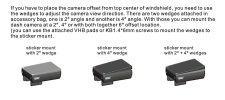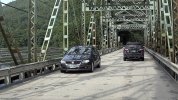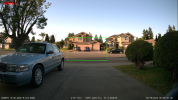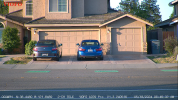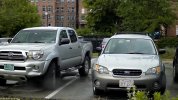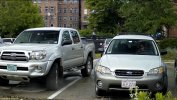@Mtz seems to be in the habit of taking credit for things others have said or done long before he did, such as when he performed the exact same telephoto mod that
@TonyM did quite some time before as if it was his own invention or remarks I and others made long ago. He dismisses the initial experimentation with telephoto lenses and modifications I and many others have been engaged in as the "old times' as if all of that history, development and commentary didn't finally lead to the commercial telephoto product we are just now seeing from
@viofo.
Nine months ago I explained why after many years of using a telephoto dash cam my
preferences have evolved to using a slightly shorter (wider) focal length lens to capture more of the road in front of one's car and how I often
angle the telephoto lens slightly to my left to better capture oncoming vehicles.
In my reply to
@viofo, I explained my thinking about why a wider lens might be an option and demonstrated why I turn the lens slightly left towards the oncoming lane of traffic. This was in the A139 Pro thread before the A229 series came to market.
September 12, 2023
Some years ago when testing a pre-production mini 906 I suggested that the camera could benefit from the ability to slightly turn to the left or right using wedges. This led to the camera shippimg with two screw-in wedges (or with tape) that could be used alone or in combination. Depending on how you installed the wedges the camera could point left or right. One wedge would turn the camera 2 degrees, the other 4 degrees. Both together would turn the camera 6 degrees right or left. A few degrees is all that is required and I found that 6 degrees was never necessary but it might be useful for some. Perhaps,
@viofo might consider including such wedges with the new telephoto lens? From the looks of things it could be a worthwhile enhancement.
Edit: Here is how the wedges worked.
This is a 12 megapixel ƒ/1.8- 8mm lens I install in place of a previous 12mm lens I found to be way too narrow for many scenarios. I turned it slightly to the left.
I find the new telephoto lens overall to be very impressive but after many years of using a powerful telephoto lens I have concluded than in many driving scenarios it is counterproductive and often unnecessary. You want a lens that reaches out there but still captures what is happening, including plate numbers that a normal camera will miss but you still want to tell the story. I have often said that a normal dash cams captures what is happening but the telephoto lens tells to story. It can be more than just license plates. Sometimes it can be a maneuver off in the distance that sets a chain of events in motion or the specific behavior of a driver such as talking on a cell phone but that may not be clearly captured on your primary camera.
PP's images are impressive but my take on the new lens is that it is too long a focal length than what is optimal and unnecessary in many situations except perhaps when you are on major straight multi-lane highway.
So, my views after 7 years of telephoto dash cam use have slowly evolved towards slightly wider lenses.
One thing I've noticed over the years is that when people are first introduced to telephoto dash cams the ability to capture license plates and other actions at great distances is so exciting that it's easy to lose sight of your goals for video capture.
For this reason practically everyone who has spent years experimenting with telephotos reached the consensus that slightly wider telephotos are preferable.
I think the focal length here may offer too much magnification but of course, some will have a different opinion, at least in these beginning stages.
My recommendation to
@viofo last September was that it might make sense to offer two different focal length telephoto lenses so that buyers might have a choice best optimized for their particular driving circumstances. ( Again, this was back when all the telephoto discussion was geared towards the A139 Pro series.)
My entire post can be found here.
I used 2 pliers. One to hold the lens and another to twist the mount. As @Dashmellow said, use a hair dryer or heat gun to warm it up around the threads and it will make it easier. I don't generally recommend using a pair of pliers to remove dash cam lenses but over the years it has sometimes...

dashcamtalk.com

